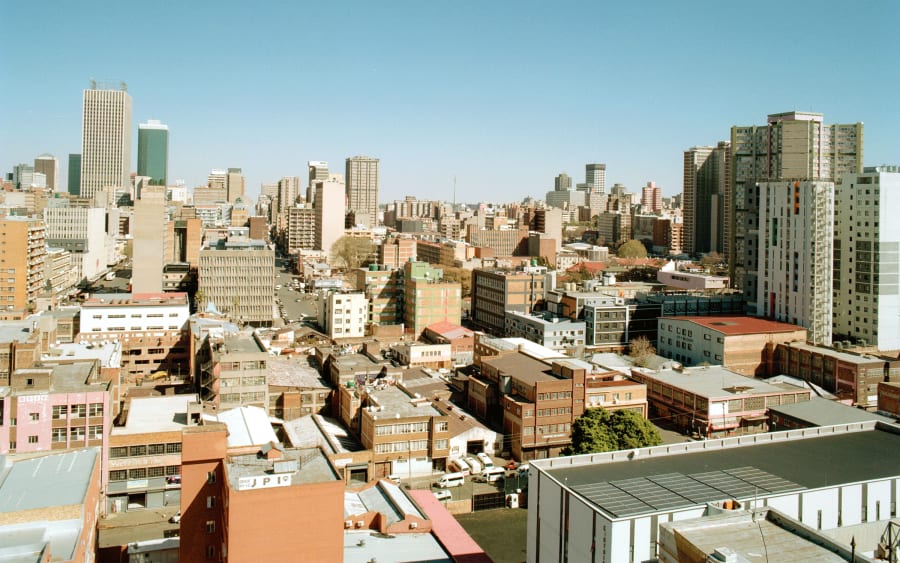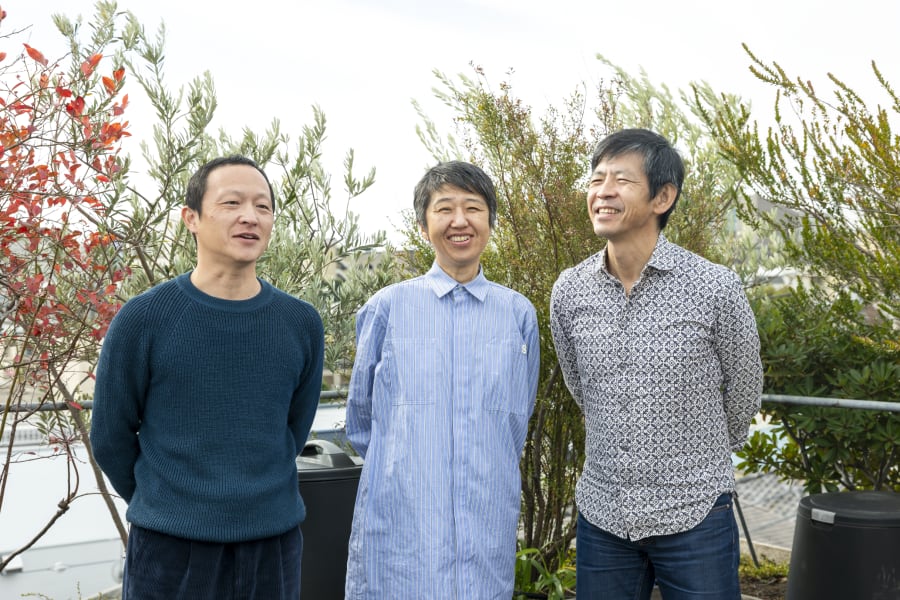In most contexts, the circumstances would hardly seem auspicious for opening a new season of art exhibitions: the country’s economy in free fall, the city’s mayor in prison amidst an authoritarian crackdown on the political opposition, and the critically acclaimed biennial shadowed by controversy. In Istanbul, though, ‘there are no normal times; we are always surrounded by crisis,’ says Levent Özmen, the senior gallery director of Dirimart, which opened in the wake of Turkey’s 2001 stock market crash. ‘We shouldn’t normalize it, but it has created a deep sense of resilience.’
Today, hopes are high that a combination of crisis-spawned creativity, collaboration, and solidarity, new institutional investments, and a reconfiguration of the troubled Istanbul Biennial, now in its 18th edition, will finally turn the international art world’s eyes back toward this ever-vibrant city of 16 million people.
Sprawling along the geographical fringes of both Europe and Asia, Istanbul has absorbed centuries of diverse cultural influences into its architecture, cuisine, communities, and crafts. It encompasses waterfront villages, high-rise business districts, gritty industrial suburbs, and history-imbued neighborhoods. But the contemporary art nourished by this rich blend is still awaiting its breakthrough moment.
‘People find it difficult to categorize the art produced in Turkey and the variety of artistic discourses here; is it part of the ‘East,’ or ‘West’, is it from a ‘developed country’ or not?’ says Çelenk Bafra, artistic director of the Istanbul Modern, the city’s flagship modern and contemporary art institution. When this private museum opened in 2004, it kicked off a boom in domestic investment in the arts sector by many of the country’s wealthiest families, allowing the ecosystem to grow despite an ongoing lack of public funding.
Housed in an airy new Renzo Piano-designed building on the banks of the Bosporus Strait, Istanbul Modern anchors what has long been the city’s arts and culture hub – the Beyoğlu district. Here, narrow streets wind uphill through café-laden quarters like Galata and Cihangir to the bustling high street İstiklal Caddesi, once one of the city’s most fashionable addresses and still lined with elegant century-old apartment buildings, many of which have been converted into stores, hotels, restaurants, and cultural venues.
Following previous editions that opted to send art-lovers to far-flung parts of the city, and a curator-selection controversy in 2023 that caused the whole event to be postponed by a year, the Istanbul Biennial is regrouping geographically in Beyoğlu. It is also expanding temporally to include three legs extending into 2027 in an approach that promises more emphasis on process and collaboration. For the first phase this autumn, Beirut-based curator Christine Tohmé will stage exhibitions in eight Beyoğlu venues, including ones with previous lives as a Greek school, an ice-cream cone factory, a French orphanage, and a 19th-century theater hall.
It’s not only the biennial that is breathing new life into Beyoğlu’s historic structures. One emerging cultural hub is the late-19th-century Belle Époque-style Union Française building, which served as the Istanbul Modern’s temporary location from 2018 to 2022. It now houses Minoa Pera, a design-forward bookstore with a stylish café/bar and intimate performance stage, as well as galleries including the well-regarded Öktem Aykut and a branch of Dirimart that focuses on more experimental works and younger artists. Nearby, the Art Nouveau-style Casa Botter – the former atelier of the palace tailor in the late Ottoman era – is a showpiece of Istanbul Metropolitan Municipality’s project to restore neglected historic buildings and convert them into cultural centers.
The initiative is a rare example of support for contemporary art from a public institution in Turkey, but with the opposition-run municipality in the political crosshairs, cultural workers have raised concerns that the daily operations of these sites may be affected. The ambiguity created by the country's political situation is compounded by an inflation rate that makes it difficult to plan projects, even for a few months in the future.
Meanwhile rising real-estate prices and gentrification projects have forced many artists and cultural workers out of Beyoğlu, sending artistic offshoots into parts of Istanbul as varied as the industrial warrens of Maslak, a business complex in the rapidly developing eastern suburb of Sultanbeyli, a secluded garden on the fringes of the city’s northern forests, and even into neighboring metropolitan and rural areas. The economic pressure has been felt especially acutely by independent initiatives like the project space PASAJ, which is on its fifth venue in 15 years.
‘Being able to secure a proper space for a long period of time is very difficult; even if you can pay, no one wants to rent to you unless you’re a business,’ explains PASAJ cofounder Seçil Yaylalı, adding that creative solutions and social solidarity help keep the scene going despite the economic difficulties. ‘People use their studios [to show work], they use shop windows, they share spaces, there are always small alternative gatherings.’
Since 2022, PASAJ has found a home inside Barın Han, a bookbinding and calligraphy workshop in a part of Istanbul’s old city better known for its Ottoman mosques than its alternative art spaces. Here, the family of the late master calligrapher Emin Barın is continuing his creative legacy by opening the building up to independent art initiatives to host exhibitions, residency programs, and other events. Bookbinders still working for the family business also collaborate with contemporary artists on projects such as a collection of tiny artist books that PASAJ has presented at fairs in both Basel and Los Angeles.
Two kilometers northwest of Barın Han, alongside a traffic-clogged six-lane road that runs underneath a fourth-century aqueduct, the cultural heritage of another storied building on the city’s historic peninsula is being revitalized. Built in the 1960s as a textile bazaar, the brutalist concrete İMÇ complex became known in the 1970s and 1980s as a hotbed for recording studios and music labels. In recent years, a growing number of its since-vacated units have become occupied by artist studios and independent galleries and artist initiatives as well as the SAHA Studio residency program. The nonprofit association SAHA has supported the participation of more than 700 visual artists and art professionals from Turkey in exhibitions, publications, research projects, and other programs, including abroad, through its membership fees, donations, and corporate support.
‘The arts scene can only be sustainable if collectors begin thinking beyond their own walls, their own collections, and embrace the responsibility to help nurture the whole ecosystem,’ declares Füsun Eczacıbaşı, the chairperson of SAHA and a member of the Art Basel Global Patrons Council. It’s not an easy ask – there is no tax benefit in Turkey for supporting the arts, for starters – but it is crucial to help bolster the development of arts education, arts criticism, and the visibility of Turkish artists as well as counter the day-to-day struggles they currently face in finding production spaces, buying necessary materials, and accessing new technology.
Under these challenging circumstances, galleries must also play a role bigger than just selling art, according to Suela J. Cennet, founder of The Pill®, which she opened in 2016 on the banks of the Golden Horn in Balat before the neighborhood became an Instagram-favorite destination. In a political climate that’s become increasingly hostile to critical voices, ‘society has become muted over the years, not just in the arts,’ she says. ‘Any platforms that allow ideas to circulate are extremely valuable.’
Cennet has taken on art-book publishing as a way to enhance the platform, and began hosting international artists to produce locally to circumvent crushing customs fees on importing works of art. Like many other gallerists in Istanbul, she is also looking abroad as a way to create more of a global dialogue and – not inconsequentially – mitigate some of the economic stress created by the plummeting Turkish lira. The Pill®’s Paris branch opened in October 2024. Dirimart, for its part, will debut its London space this September. ‘It’s important to create community beyond Istanbul in order for our artists to have broader visibility,’ says Özmen. ‘Our mission as a gallery has always been defined around keeping Istanbul relevant in the global art scene.’
‘For our local buyers, [opening an outpost] is a sign of commitment and strength – that we made it through hard times and are now expanding,’ echoes Cennet. ‘Each exhibition is a new beginning.’
The 18th Istanbul Biennial’s first stage runs from September 20 to November 23, 2025.
Jennifer Hattam is an Istanbul-based journalist writing about the arts for Hyperallergic and about urban issues for Bloomberg CityLab, among other international publications. She is also the author of the Istanbul etc. newsletter on arts and culture in Turkey.
Caption for header image: Istanbul. Photograph by Cansu Yıldıran for Art Basel.
Published on September 18, 2025.


